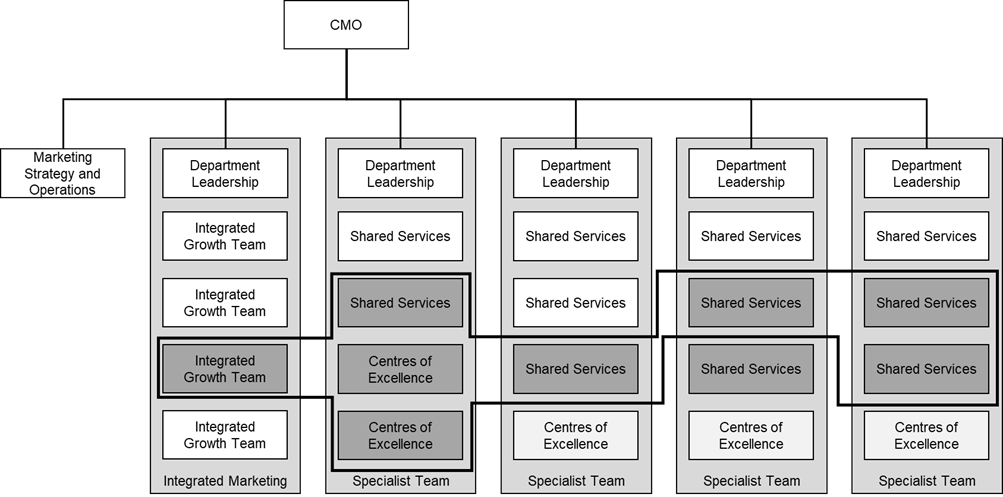An organisation design for Marketing
Building a marketing function that maximises value and activates exceptional customer experiences aligned to your unique and likely complex product capabilities requires operational excellence. Marketing needs an operating model to be successful but the consistency (or not) that you apply to how this is implemented is down to you. Planning an evolution from current state via an intermediate state towards an end goal may be the best path to success but if you take this path ensure teams understand this is the strategy. A state of constant uncertainty can undermine the best of intentions. Knowing the operating model that is most appropriate for your current and future needs and evolving over time is the foundation of what makes marketing organisations that work, work.
Shared Services and Centres of Excellence will resort to working in silos and align to departmental measures of success unless they have the right operation model and governance with integrated teams to bring them together. Integrated Sprint Teams must be strong collaborators, communicators and partners to the organisation to be effective in their roles. Integrated teams are at the heart of the measures within the marketing scorecard and are grounded in the goals of the marketing performance framework.
The group highlighted would work together cross-functionally, under the leadership of the Integrated Growth team responsible for KPIs and business performance.
Marketing is an ever-evolving effort. Which teams best align where, the reporting lines within those teams or whether they are centralised or not all need to be determined by the needs of the organisation. And it will likely never be done. As you grow or the market changes or technologies evolve you will need to update and refine your organisation design, but to get started here are some examples of different functions and how they could align:
Centre of Excellence create and facilitate sharing of best practices across teams. A Centre of excellence offers department leaders the chance to effectively and consistently gain and activate first-party data and measurement across the marketing organization. Examples:
.com experiences
Event experiences
ABM
Email strategy
Geo and Area teams
Brand strategy
Product Marketing
Shared Services drive high-output production and execution. A Shared Services team offers Centres of Excellence and other teams a cost-effective, consistent route to market with structured operational models, processes and standards that enable clear measurement and learn from past experience. Examples:
Marketing Operations
Measurement and Reporting
Digital Activation
Content Development
Creative Development
Marketing Enablement
Project Management
Integrated Growth Teams drive cross-functional alignment and bring together the best of your internal capabilities. Their success measures are the most strategic goals rather than functional or process measures and they drive ultimate business value. These integrated teams themselves should not be silo’d but may include members from each other too. I.e. Growth campaigns may way to include Strategic Events and Brand as part of their team. Examples:
Growth Campaigns
Strategic Events
Brand

